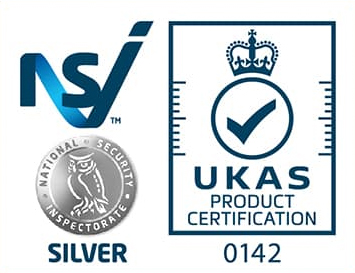The type of fire that is likely to occur in a property will determine the type of fire extinguisher you need to have. There are different classes of fire and extinguishers are designed differently for each class; you may need more than one type of extinguisher in your property. Fires are categorised, in classes A to F, by the materials that cause them. Both are listed below:
- Class A: combustible materials such as wood, paper or textiles.
- Class B: flammable liquids such as petrol, diesel and oils (not cooking oil or alcohol).
- Class C: gases such as butane and methane.
- Class D: metals such as lithium and potassium.
- Electrical: electrical equipment such as computers.
- Class F: cooking oils and fats.
Below, we have discussed the different types of fire extinguisher, what they are designed for, and what type of property they would be best suited to.
Water
A water extinguisher is designed for Class A fires; they will have a red label on them. They work by cooling the fire and, therefore, slowing down the burning. Water extinguishers are best suited in properties with soft furnishings or carpets such as an office, home, school or hospital. They are not suitable in a kitchen.
Foam
Foam extinguishers also have a cooling effect and they are designed for Class B fires; however, they can also be used for Class A. They will have a cream label. A foam fire extinguisher would be good in a garage and can also be used effectively in the properties listed above for water extinguishers.
Dry Powder
These are more versatile as they can be used on Class A, B and C fires; these extinguishers have a blue label. They work by creating a barrier between the fuel of the fire and the oxygen. It’s not recommended to use these inside as they can create breathing difficulties in addition to decreased visibility. A dry powder extinguisher would be suitable in a business that uses flammable gases or premises with large boiler rooms.
CO2
A CO2 fire extinguisher is ideal for places with risks of electrical fires such as properties that use a lot of electrical equipment. They will have a black label and work by suffocating the fire and displacing the oxygen. Offices and computer server rooms would be suited for CO2 extinguishers.
Wet Chemical
These are designed for Class F fires and are, therefore, suitable for kitchens. They have a yellow label and work by knocking the flames out of a fire and cooling the oil, turning it into a soapy solution which seals the surface and thus prevents it from re-igniting.
If you’re looking to get a fire extinguisher for your property or you’d like to find out more about which type would be the most suitable, get in touch with the team at Matrix Fire & Security. Give us a call on 01296 614440 or fill out our contact form online and we’ll be in touch as soon as possible.


